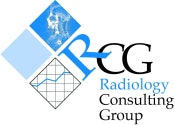
AuntMinnie.com is pleased to present the first in an ongoing series of practice management articles contributed by the Radiology Consulting Group in Boston. This twice-monthly series will address topics and issues of concern to radiology administrators and business managers.
Len Levine, MSIE, Senior Business Consultant
Radiology Consulting Group

In radiology, report turnaround, technologist productivity, equipment utilization, film library effectiveness, and financial unit costs are frequently benchmarked to identify best practices and identify opportunities for expense reduction. In financial benchmarking, unit costs are often expressed as a cost per relative value unit (RVU). Typically, the Health Care Financing Administration (HCFA) technical component of the RVU is used.
Benchmarking unit costs to those of other institutions can lead to opportunities for cost reductions. Opportunities for reducing expenses are estimated by multiplying the cost for best practice per RVU by the total institution practice RVUs. The difference between this result and the current total cost for providing the service is the opportunity for expense reduction.
In one instance, benchmarking revealed an opportunity to save a half-million dollars (U.S.) annually in transcription costs across a four-hospital system. The opportunity was based on unit costs to those of a partner institution that was using a voice recognition system.
RVU limitations
One frequently overlooked limitation of the technical RVU scale is its failure to account for the surgical work performed in interventional procedures. Surgical work RVUs are calculated as professional work only and are not accounted for in the technical RVU scale. This limitation may penalize a benchmarking partner that performs relatively more interventional procedures than the institution it is being compared to.
The average RVUs per procedure reported for a modality should also be verified. Most modalities have a relatively narrow range of RVUs for the 70,000-90,000 radiological current procedural terminology-fourth edition codes (CPT-4). An average RVU per procedure outside the range is a flag that raises questions about the accuracy of the data.
Calculating RVUs per technologist and RVUs per equipped room is another way of measuring benchmark productivity. The RVU scale works well for comparing technologist productivity within modalities across different institutions. However, RVUs can be misleading if the scale is used to compare workload among technologists across modalities.
Exam time vs. exam quantity
If the RVU is used as a proxy measure for work, then it's not unreasonable to think of an RVU as a unit of exam time. For example, an average plain-film study may require five to ten minutes to complete and have an average RVU assignment of 0.6, whereas an MR at 45 minutes to an hour may have an average RVU assignment of 14. Based on time required to perform the exam, the plain-film technologist would have to work more than two hours to receive the same credit.
Perhaps a better alternative is to measure productivity using the number of exams per equipped room. In CT or MR, for example, a second technologist is often used to improve throughput and maximize scanner time. While this arrangement may increase throughput, capacity, and revenue, it may make the technologist appear less productive. However, to do otherwise would be penny-wise and pound-foolish.
When using unit costs to benchmark best practices at the modality level, it's important to separate indirect radiology expenses (transcription, film library) from direct modality expenses such as technologists and supplies.
If unit costs at the modality level have support services expenses included, it is difficult, if not impossible, to isolate the best practice underlying the metric. This is because very few radiology departments perform true activity-based costing to accurately allocate these expenses from support services to modality cost centers. Depreciation and lease expenses should also be unbundled from modality unit costs because the cost accounting practices for capital equipment are often very different across institutions.
A word of caution: The validity of the comparisons should be assessed carefully before the results are used for decision making. Financial benchmarking can begin with a single institution based on historical comparisons. Or, if your institution is a member of a partnership, performing financial benchmarking against similar departments in the member institutions can identify system-wide opportunities for improvement.
By Len LevineAuntMinnie.com contributing writer
April 19, 2001
Click here to post your comments about this story. Please include the headline of the article in your message.
Copyright © 2001 AuntMinnie.com

















